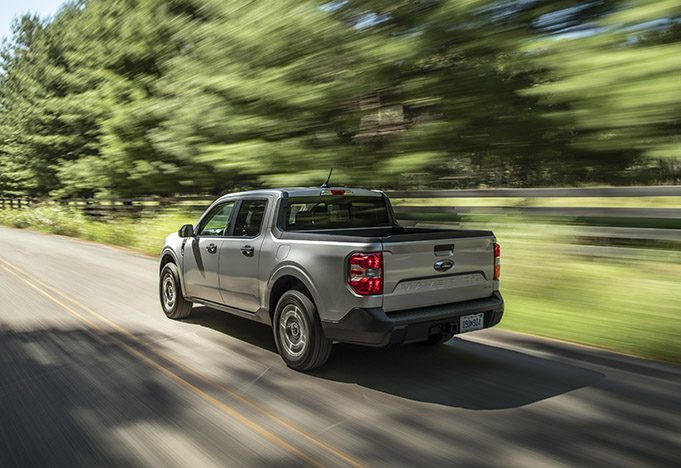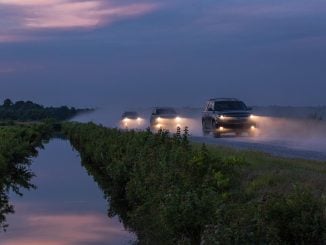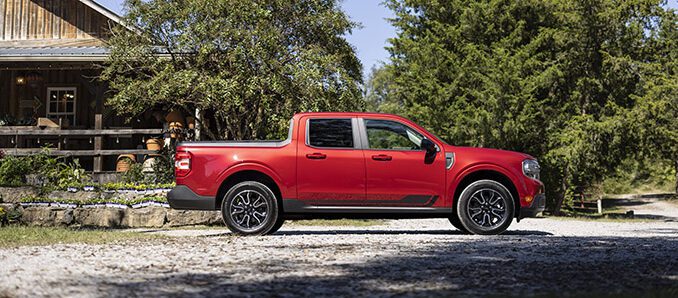
NASHVILLE, Tenn. — I love practical vehicles. It’s why I drive a Volvo station wagon.
While some cars are created to drive around a racetrack as fast as possible or simply to look pretty, most are bought for two reasons: to haul around people and haul around stuff.s The better it does at these essential tasks, the more I like it.
Hence, my beloved Volvo V60 wagon, which is the perfect balance of practicality and sportiness. I can make an epic Costco run while simultaneously hauling around myself and three friends in comfort and Swedish style.
Practicality is driving people to crossovers and SUVs in droves, too. It turns out that folks like having a high roof and lots of cargo space instead of the tiny trunk in a sedan. And, of course, it’s why Americans love pickup trucks.
The pickup is the quintessential American vehicle. It represents freedom and flexibility and power and authority. And, perhaps less beneficially, terrible fuel economy and parking nightmares in the city.
But Ford, the quintessential American pickup maker, has come out with its smallest pickup in decades to address those last two issues while still giving buyers the practicality — and affordability — that we crave.
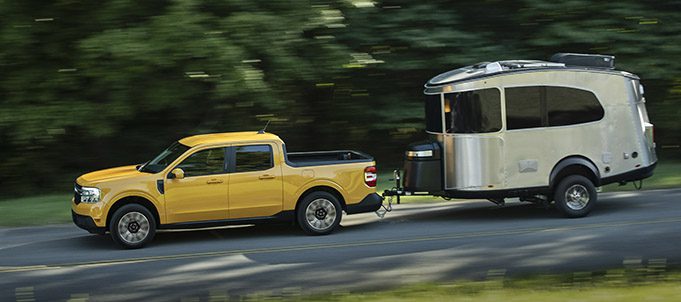
It’s called the Ford Maverick, and though that name is a throwback to an old Ford that is decidedly not a pickup, the new name fits this little truck perfectly. The Maverick, which starts around $21,500, is roughly the size of the old Ford Ranger from the ’90s and has perhaps the best-designed interior of any car I’ve ever driven.
There are an astonishing 16 cupholders. Sixteen, in a car that carries four people comfortably (or five somewhat uncomfortably, and you lose four cupholders in the process). The door pockets in particular are worth calling out. Ford designed them to securely hold water bottles from Nalgene and Yeti, though they do an equally adept job of keeping Evian, Fiji, or Perrier in place. And if you have really huge water bottles, you can tuck them horizontally into an extended cubby hidden in the doors.
It’s hard to explain how excellent these door pockets are, but once you see them, you’ll wonder how it took so long for them to exist. I expect these Maverick innovations will take hold in next-generation versions of Ford’s other pickups as well.
Maverick is built upon the same platform as the Ford Escape and the Bronco Sport (that’s the little one). That means it ditches the body-on-frame design used for all of Ford’s other trucks in favor of a modern spaceframe. This means that the Maverick has a much smoother, car-like ride than larger trucks like the Ranger and the F-150.
And the size of the Maverick is critical. It’s significantly shorter than the new Ranger, and Ford has worked hard to make the bed much easier to access than larger trucks. They noted that a “5th-percentile woman” — around 5’0″ or so — would be able to successfully reach items in the truck bed, something that definitely isn’t possible in the company’s larger trucks.
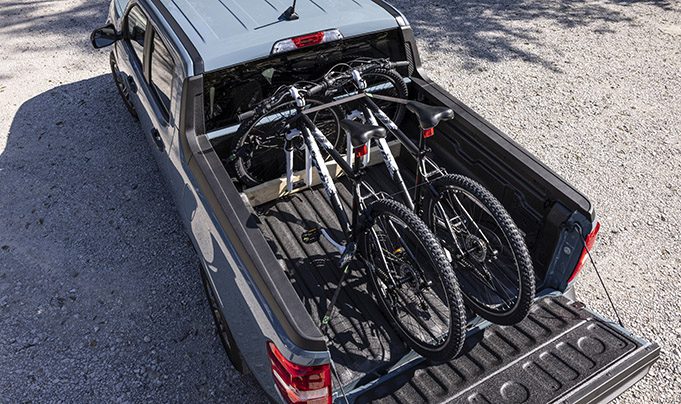
The bed is full of clever solutions, too, including a full slate of do-it-yourself add-ons. You can buy things like cargo rails or bike racks from Ford (for a pretty penny), but the bed was designed so you can go to Harbor Freight or Home Depot and spend $40 and build those things yourself.
The first vehicle I’ve reviewed where I’d be delighted with the base model.
QR codes in the bed link to how-to videos for building a mountain bike rack, installing LED strip lights, and several other things. It’s very clever and will give owners a real sense of individuality and uniqueness by modifying their trucks.
Ford sells a set of accessories to add functionality to the back of the center console for rear-seat passengers. There are removable cupholders, a trash can, a wrap for charging cables, and a few other things. But Ford has also released CAD designs for the mounting point so people can 3D print their own or design new creations.
For decades, pickup trucks have included places to mount 2×4 pieces of plywood to reconfigure the truck bed. But the Maverick is a bit more intentional about those slots. One at the back of the bed is specifically designed so that a 5th-percentile female could reach in and access groceries or whatever other cargo they might need to put back there. The design team brought a wide selection of strollers into the design lab to make sure they would fit. And it can even haul more than a dozen 4×8 sheets of plywood.
The other thing worth calling out is the truck’s standard hybrid powertrain. The 2.5-liter four-cylinder engine and electric motor produce an impressive 191 horsepower while delivering greater than 40 MPG city. There’s also an optional 2.0-liter turbo four-cylinder that makes more power (250 hp and 277 lb-ft) and bumps you to AWD, while the hybrid is FWD-only.
Pricing starts at $21,500, and this is the first vehicle I’ve reviewed (out of hundreds) where I’d be delighted with the base model. With that fuel-sipping hybrid, an 8-inch screen that supports wired Apple CarPlay and Android Auto, and the clever interior with all those cupholders, even the stripped-down XL model would make a perfect farm or first truck.
XLT and Lariat upgrades add fancy things like adaptive cruise control (though even regular cruise control is an option on XL, as are power mirrors), blind-spot monitoring, leather, and some other niceties.
But this is a truck. Maybe you don’t need all that stuff. If you want some basic transportation that allows you to haul people and things, with clever design and an efficient powertrain, get yourself a Ford Maverick.
